The Art of Re-Design
Ordinarily, our "Little Things" column discusses ways you can use decorating accessories to change the look of a room. The right little things — lampshades, doorknobs, throw pillows or drawer pulls can make a big difference, and can be an inexpensive way of brightening a room, or of changing its mood in a flash.
But for our special Anniversary Issue, we're going to look instead at a kind of "little thing" that can also have a big impact with a small price tag —the art of re-design.
Julie Martelo, a 2001 NYIAD grad, has been re-designing the homes of Florida her business since opening Time to Redesign in the fall of 2002, a year after earning her NYIAD certificate.
Martelo specializes in re-design, which she explains is often referred to as "one day decorating" or "use what you have decorating."
"By using what a client already owns, the cost to redesign a room is very reasonable. We begin by removing the existing furniture, artwork, lighting and accessories. Then, by following some basic design principals, we bring everything back into the room, paying particular attention to placement and the clients' desires for the room. Our goal is to give the client a new space that will address what is not working in the space."
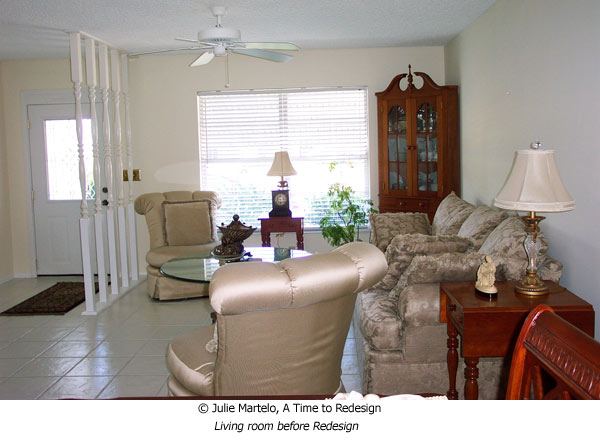
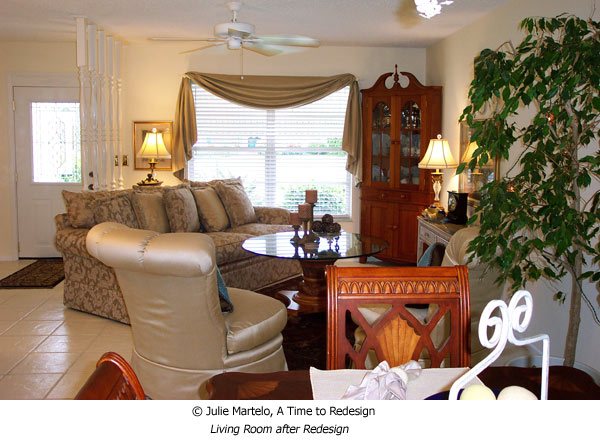
Re-design works with the owner's own furniture and accessories, and requires a great deal of imagination on the part of the designer.
It's gaining in popularity, Martelo says, because the client doesn't have to invest in new furnishings, keeping the cost of the project down.
"While starting from scratch is always nice, redesign is a great alternative for those whose budget won't allow that. It's amazing how moving a sofa to a different place in the room or bringing in a chair from the bedroom and adding a rug that was stored in the garage will completely change a room. One of the most frequent comments I hear from a client seeing their room for the first time is "I can't believe this is all my stuff!" But it is and that is why they love it."
A re-designer is often also used in staging a home for sale, and this is one of the services that Martleo also provides. When a home is occupied, staging clears out the clutter, allowing the buyer to really see what the home looks like, but sometimes the job involves renting furniture to give an empty home a warmer look.
"Home buyers need to see themselves living in a home; therefore it's important for the seller to remove their personality," Martelo said. "A professional real estate stager will help the seller to remove their emotional attachment to the home and neutralize it so it will appeal to a larger range of buyers. De-cluttering and editing are two of the biggest areas most sellers need to address, especially if they will be living in the home while it is on the market."
The other main area Martelo looks at in staging is the "curb appeal."
"First impressions are made at the curb, and you want buyers to walk to the front door with a good feeling. Empty homes should also be staged so buyers will feel "at home" as well as see a home's potential with furniture arrangements."
Over the years, Martelo finds that her career continues to bring her great happiness.
"The flexibility to make my own hours has enhanced my life tremendously. Each day brings different challenges, and I have met some of the most wonderful people, and many clients have now become friends." she said.
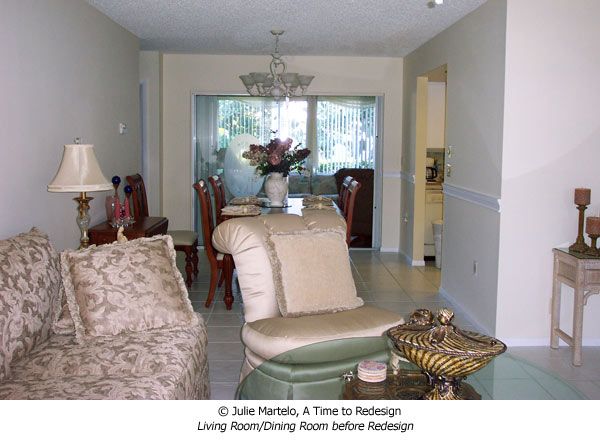
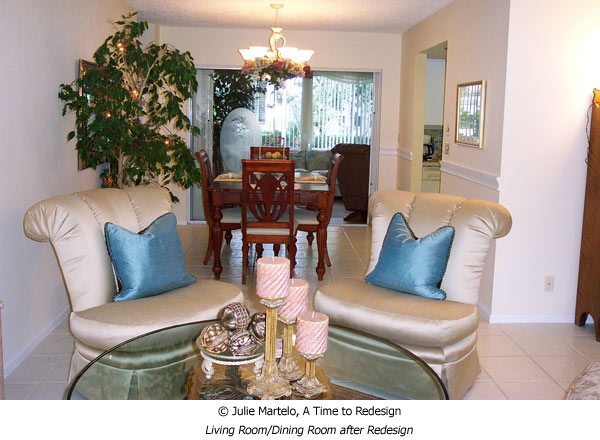
Martelo enjoys bringing the joy of design to people who may not want to or be able to spend a lot on their homes.
"Many people who cannot afford a designer can hire a re-designer, and they will feel like they have a completely new home," she said.
It's also a quick fix, with instant gratification. "A client can go shopping, to lunch and a movie and when they return three rooms can be completely redesigned," Martelo said.
"They can also add to a redesign by using a list provided by the re-designer of anything that may help complete the room. Some clients will shop from the list themselves at their leisure, depending on budget; others may hire the re-designer to purchase all or some of the items on the list. My experience is that most homeowners have everything they need for the redesign, but just don't know how to pull it all together. And when there are a few items to be added they are usually low budget items like lamps and area rugs. I have always love re-arranging and finding new ways to use old accessories. The challenge I find in completely changing the look and feel of a room is so rewarding.
Martelo started out because she was drawn to decorating and design, but now she has found her own niche.
"Decorating is my passion and although I originally started in the design field, I have found Interior Redesign to be a great choice for me," she said.
Much of Martelo's satisfaction comes from working with each individual client. "When my client first sees their completed room and is overwhelmed with emotion, it is the best compliment I could ever receive."
Since she was a small child, Martelo was intrigued with "houses, homes, and decorating."
"I was always re-arranging my room and loved making rooms out of shoeboxes, complete with curtains, furniture and rugs," she said.
In the 1990s, Martelo decided to enroll in the NYIAD Complete Course in Interior Design, and also took some drafting classes at her local community college.
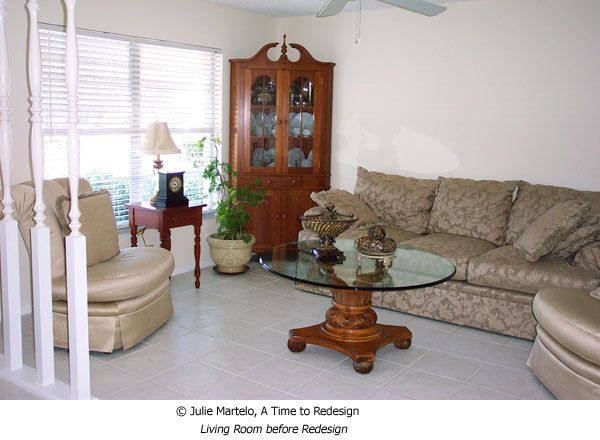
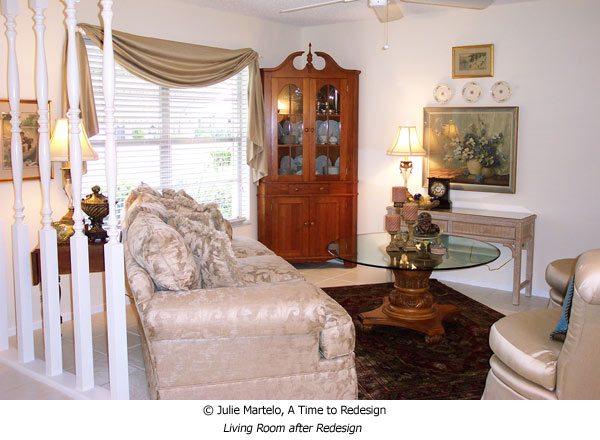
When she had completed five of the six units, life intervened as it will sometimes, and Martelo had to put her studies on hold. But she was able to resume them in 2001, and when she heard about the then-new concept of re-design, she was even more motivated to continue.
She completed the course and opened Time to Redesign in the fall of 2002.
Today, she is still aware of how the NYIAD Interior Design Course helped her launch her business.
"The course from NYIAD provided me with design principals I would need to be a success in the area of decorating and design," Martelo said. "I always had an eye for good design, but learning the reasons why gave me the confidence to step out and start a business. I really appreciated the feedback I received from my instructors, which helped me to see areas I could improve. The hands on activities were fun as well as educational."
Resources
- A Time to Redesign







